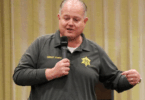In a period of 12 months, data captured by the Bucks County District Attorney’s Office shows there were more than 850 overdoses reported to authorities across the 622-square-mile county. Of those who overdosed, 70 percent were men and the majority were in the largest population center – Lower Bucks County.
Those saved by the lifesaving opioid overdose antidote naloxone numbers in the hundreds while overdose deaths were around 200 in 2017, according to data.
This Thursday, Bucks Countians will have the chance to pick up free naloxone as part of a statewide effort to reduce the number of fatal opioid overdoses.
Three locations – one in each part of the county – will be distributing naloxone between 11 a.m. and 7 p.m.
- Southern Bucks Recovery Community Center – 1286 Veterans Highway, Suite 6D in Bristol Township
- Bucks County Drug and Alcohol Commission – 600 Louis Drive, Suite 102A in Warminster
- Quakertown Branch of the Bucks County Free Library – 401 W. Mill Street in Quakertown
“The life-saving medication naloxone is essential for all of us to have on hand, particularly if you have a loved one suffering from opioid-use disorder,” Gov. Tom Wolf said of the effort. “We want to ensure that through this opportunity for free naloxone, we can save more lives and get more Pennsylvanians into treatment. Keeping naloxone in your home, work or even in your car can make the difference between someone getting into treatment or dying from this disease.”
During an opioid overdose, the victim’s brain is slowly starved of oxygen, causing damage to the body and eventually pushing the person closer to death. Naloxone blocks the impacts of opioids if administered, often by bystanders or arriving emergency responders.
“Naloxone has one function: to reverse the effects of opioids on the brain and respiratory system and save someone’s life,” Pennsylvania Secretary of Health Dr. Rachel Levine explained. “It is impossible to get someone in to treatment who is dead. Every Pennsylvanian has a role to play as a potential first responder and can save a life by having naloxone on hand and using it if they come across someone who has overdosed.”
Jen Smith, the secretary of the Pennsylvania Department of Drug and Alcohol Programs, said that a major misconception is that people who overdose are wanting die, but the majority of overdose deaths are accidental.
“We do not stand a chance in overcoming this epidemic if we are unable to help individuals into treatment. I encourage everyone to take advantage of this opportunity to help their loved ones in their time of need,” Smith said.









